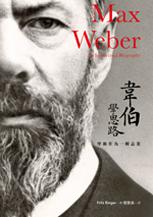 凝聚态场论txt,chm,pdf,epub,mobi下载
凝聚态场论txt,chm,pdf,epub,mobi下载作者: Alexander Altland (A.阿尔特兰) / Ben Simons (B.西蒙斯)
出版社: 世界图书出版公司
原作名: Condensed Matter Field theory
出版年: 2015-5-1
页数: 776
定价: 159
装帧: 平装
ISBN: 9787510095559
内容简介 · · · · · ·
Modern experimental developments in condensed matter and ultracold atom physics present formidable challenges to theorists. This book provides a pedagogical introduction to quan-tum field theory in many particle physics, emphasizing the applicability of the formalism to concrete problems.
This second edition contains two new chapters developing path integral approaches to classi...
作者简介 · · · · · ·
Alexander Altland is Professor of Theoretical Condensed Matter Physics at the Institute of Theoretical Physics, University of K¨oln. His main areas of research include mesoscopic physics, the physics of interacting many particle systems, and quantum nonlinear dynamics.
Benjamin D. Simons is Professor of Theoretical Condensed Matter Physics at the
Cavendish Laboratory, Universit...
目录 · · · · · ·
Preface1 From particles to fields
1.1 Classical harmonic chain: phonons
1.2 Functional analysis and variational principles
1.3 Maxwell’s equations as a variational principle
1.4 Quantum chain
· · · · · · ()
Preface
1 From particles to fields
1.1 Classical harmonic chain: phonons
1.2 Functional analysis and variational principles
1.3 Maxwell’s equations as a variational principle
1.4 Quantum chain
1.5 Quantum electrodynamics
1.6 Noether’s theorem
1.7 Summary and outlook
1.8 Problems
2 Second quantization
2.1 Introduction to second quantization
2.2 Applications of second quantization
2.3 Summary and outlook
2.4 Problems
3 Feynman path integral
3.1 The path integral: general formalism
3.2 Construction of the path integral
3.3 Applications of the Feynman path integral
3.4 Problems
3.5 Problems
4 Functional field integral
4.1 Construction of the many—body path integral
4.2 Field integral for the quantum partition function
4.3 Field theoretical bosonization: a case study
4.4 Summary and outlook
4.5 Problems
5 Perturbation theory
5.1 General structures and low—order expansions
5.2 Ground state energy of the interacting electron gas
5.3 Infinite—order expansions
5.4 Summary and outlook
5.5 Problems
6 Broken symmetry and collective phenomena
6.1 Mean—field theory
6.2 Plasma theory of the interacting electron gas
6.3 Bose—Einstein condensation and superfluidity
6.4 Superconductivity
6.5 Field theory of the disordered electron gas
6.6 Summary and outlook
6.7 Problems
Response functions
7.1 Crash course in modern experimental techniques
7.2 Linear response theory
7.3 Analytic structure of correlation functions
7.4 Electromagnetic linear response
7.5 Summary and outlook
7.6 Problems
8 The renormalization group
8.1 The one—dimensional Ising model
8.2 Dissipative quantum tunneling
8.3 Renormalization group: general theory
8.4 RG analysis of the ferromagnetic transition
8.5 RG analysis of the nonlinear σ—model
8.6 Berezinskii—Kosterlitz—Thouless transition
8.7 Summary and outlook
8.8 Problems
9 Topology
9.1 Example: particle on a ring
9.2 Homotopy
9.3 θ—Oterms
9.4 Wess—Zurnino terms
9.5 Chern—Simons terms
9.6 Summary and outlook
9.7 Problems
10 Nonequilibrium (classical)
10.1 Fundamental questions of (nonequilibrium) statistical mechanics
10.2 Langevin theory
10.3 Boltzmann kinetic theory
10.4 Stochastic processes
10.5 Field theory Ⅰ: zero dimensional theories
10.6 Field theory Ⅱ: higher dimensions
10.7 Field theory Ⅲ: applications
10.8 Summary and Outlook
10.9 Problems
11 Nonequilibrium (quantum)
11.1 Prelude: Quantum master equation
11.2 Keldysh formalism: basics
11.3 Particle coupled to an environment
11.4 Fermion Keldysh theory (a list of changes)
11.5 Kinetic equation
11.6 A mesoscopic application
11.7 Full counting statistics
11.8 Summary and outlook
11.9 Problems
Index
· · · · · · ()






发布评论